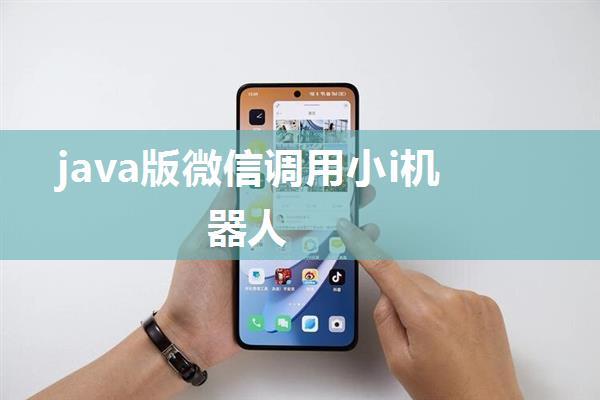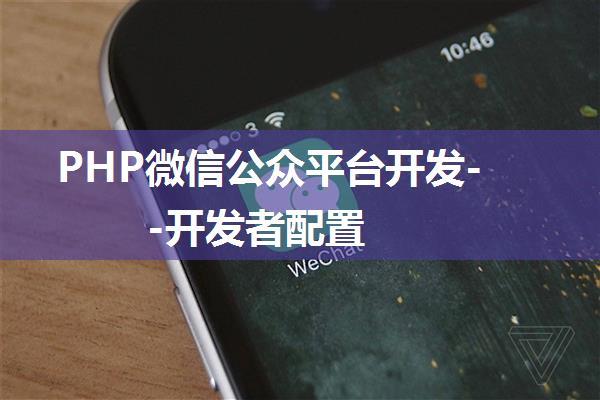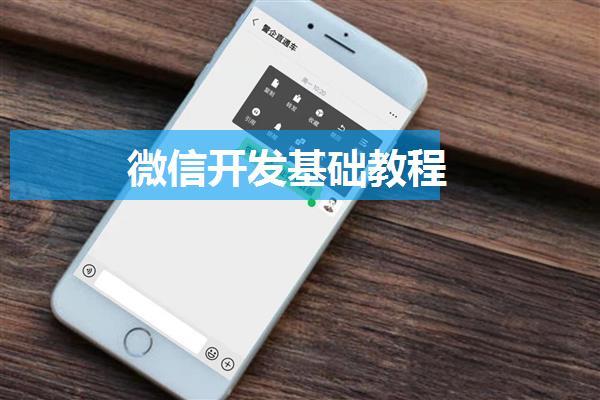
Java版微信调用小i机器人
前言
在微信开放平台中,提供了一个名为"小i机器人的"服务,这个服务允许开发者创建自己的小程序或应用,并与微信进行集成。通过使用小i机器人,我们可以实现用户注册、登录、授权等功能。在本文中,我们将详细描述如何在Java版微信中调用小i机器人。
初级授权和高级授权
在微信开放平台中,用户注册申请后会自动为初级授权用户。初级授权没有过期时间,而当用户申请实名认证后,就会升级为高级授权用户。高级授权用户有5个月的免费调用时间。
权限
在微信开放平台中,提供了多种接口和功能供开发者使用。在快速接入-api上面的开发者中心,我们可以找到以下权限:
* 基本信息
* 获取用户基本信息 * 获取用户头像* 授权管理
* 获取授权状态 * 刷新授权令牌* 消息推送
* 发送模板消息 * 发送普通消息快速接入-api
在快速接入-api上面的开发者中心,我们可以找到以下接口:
* 获取用户基本信息
* 接口名称:/user/basicinfo * 请求方式:GET * 参数:
+ `openid`: 用户的唯一标识符 + `lang`:语言类型(可选)
* 返回值:用户基本信息对象* 获取授权状态
* 接口名称:/auth/status * 请求方式:GET * 参数:
+ `openid`: 用户的唯一标识符 + `lang`:语言类型(可选)
* 返回值:授权状态对象Java版微信调用小i机器人
在Java版微信中,我们可以使用以下步骤来调用小i机器人:
1. 注册开发者账号
* 在微信开放平台中注册一个开发者账号 * 创建一个应用,并获取appid和appsecret2. 获取用户授权
* 使用快速接入-api的授权管理接口,获取用户授权状态 * 如果用户未授权,则使用快速接入-api的基本信息接口,获取用户基本信息3. 调用小i机器人
* 使用快速接入-api的消息推送接口,发送模板消息或普通消息示例代码
以下是Java版微信中调用小i机器人的示例代码:
```javaimport java.io.BufferedReader;
import java.io.InputStreamReader;
import java.net.HttpURLConnection;
import java.net.URL;
public class Main {
public static void main(String[] args) throws Exception {
// 注册开发者账号 String appid = "your_appid";
String appsecret = "your_appsecret";
// 获取用户授权 String openid = "your_openid";
String authStatus = getAuthStatus(appid, appsecret, openid);
if (authStatus.equals("0")) {
// 用户未授权 System.out.println("User not authorized");
return;
}
// 调用小i机器人 String message = "Hello, World!";
sendTemplateMessage(appid, appsecret, openid, message);
}
private static String getAuthStatus(String appid, String appsecret, String openid) throws Exception {
URL url = new URL(" + appid + "&secret=" + appsecret + "&openid=" + openid);
HttpURLConnection connection = (HttpURLConnection) url.openConnection();
connection.setRequestMethod("GET");
int responseCode = connection.getResponseCode();
if (responseCode ==200) {
BufferedReader in = new BufferedReader(new InputStreamReader(connection.getInputStream()));
String inputLine;
StringBuffer response = new StringBuffer();
while ((inputLine = in.readLine()) != null) {
response.append(inputLine);
}
in.close();
return response.toString();
} else {
System.out.println("Error: " + connection.getResponseMessage());
return "";
}
}
private static void sendTemplateMessage(String appid, String appsecret, String openid, String message) throws Exception {
URL url = new URL(" + appid + "&access_token=" + getAccessToken(appid, appsecret));
HttpURLConnection connection = (HttpURLConnection) url.openConnection();
connection.setRequestMethod("POST");
connection.setDoOutput(true);
DataOutputStream out = new DataOutputStream(connection.getOutputStream());
out.writeBytes("{"touser":"" + openid + "","template_id":"your_template_id","url":" + message + ""}}");
out.flush();
out.close();
int responseCode = connection.getResponseCode();
if (responseCode ==200) {
System.out.println("Message sent successfully");
} else {
System.out.println("Error: " + connection.getResponseMessage());
}
}
private static String getAccessToken(String appid, String appsecret) throws Exception {
URL url = new URL(" + appid + "&secret=" + appsecret);
HttpURLConnection connection = (HttpURLConnection) url.openConnection();
connection.setRequestMethod("GET");
int responseCode = connection.getResponseCode();
if (responseCode ==200) {
BufferedReader in = new BufferedReader(new InputStreamReader(connection.getInputStream()));
String inputLine;
StringBuffer response = new StringBuffer();
while ((inputLine = in.readLine()) != null) {
response.append(inputLine);
}
in.close();
return response.toString();
} else {
System.out.println("Error: " + connection.getResponseMessage());
return "";
}
}
}
```
以上是Java版微信中调用小i机器人的示例代码。





